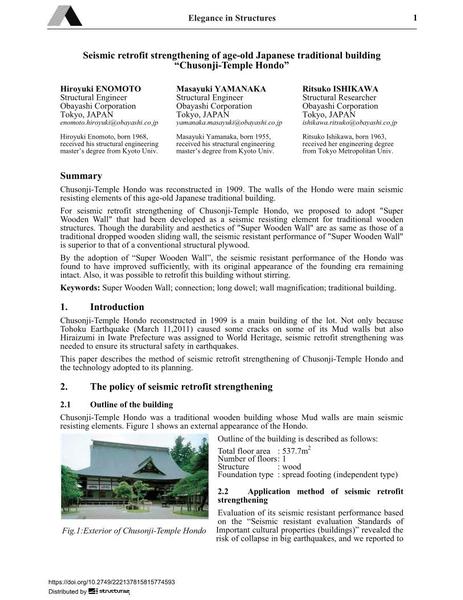Seismic retrofit strengthening of age-old Japanese traditional building "Chusonji-Temple Hondo"

|
|
|||||||||||
Détails bibliographiques
| Auteur(s): |
Hiroyuki Enomoto
Masayuki Yamanaka Ritsuko Ishikawa |
||||
|---|---|---|---|---|---|
| Médium: | papier de conférence | ||||
| Langue(s): | anglais | ||||
| Conférence: | IABSE Conference: Elegance in structures, Nara, Japan, 13-15 May 2015 | ||||
| Publié dans: | IABSE Conference Nara 2015 | ||||
|
|||||
| Page(s): | 202-203 | ||||
| Nombre total de pages (du PDF): | 8 | ||||
| Année: | 2015 | ||||
| DOI: | 10.2749/222137815815774593 | ||||
| Abstrait: |
Chusonji-Temple Rondo was reconstructed in 1909. The walls of the Rondo were main seismic resisting elements of this age-old Japanese traditional building. For seismic retrofit strengthening of Chusonji-Temple Rondo, we proposed to adopt "Super Wooden Wall" that had been developed as a seismic resisting element for traditional wooden structures. Though the durability and aesthetics of "Super Wooden Wall" are as same as those of a traditional dropped wooden sliding wall, the seismic resistant performance of "Super Wooden Wall" is superior to that of a conventional structural plywood. By the adoption of "Super Wooden Wall", the seismic resistant performance of the Rondo was found to have improved sufficiently, with its original appearance of the founding era remaining intact. Also, it was possible to retrofit this building without stirring. |
||||
